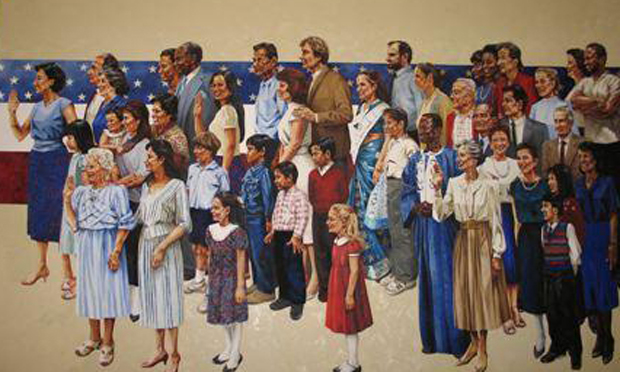
The immigration debate in the United States is driven by unique dynamics — nearly all U.S. residents are descended from immigrants of one kind or another, yet opposition to immigration is anything but rare; the country has a long, hard-to-police southern border that has recently seen an influx of unaccompanied child migrants; and a web of local, state and federal laws make enforcement difficult and can lead to unintended effects.
Attitudes toward immigration have shifted over recent years, but establishing precisely why is not as easy as it might seem. A 2013 metastudy in Public Opinion Quarterly, “The Dynamics of Immigration Opinion in the United States, 1992-2012,” finds that the effect of national socioeconomic and political events “does not neatly fit conventional wisdom.” Indeed, “Economic problems in 1991-92, 2001, and 2008-10 did not increase opposition to immigration, but in the wake of rancorous debates over immigration policy in 1994-96 and 2006-07, and the events of 9/11, opinion on some issues became more negative.”
Surveying the state of research, Jens Hainmueller of Stanford and Daniel J. Hopkins of Georgetown synthesize 100 of the most comprehensive studies to date with their own scholarship. Their 2014 paper in the Annual Review of Political Science, “Public Attitudes Toward Immigration,” investigates the two major scholarly approaches toward the question — “political economy” and “sociopsychological” — to pinpoint the underlying factors that best explain attitudes of U.S.-born residents toward immigrants in America, Canada and Europe over the past two decades. Political economy approaches are characterized as follows: “Frequently starting from formal models of immigration’s economic impacts, this theoretical approach explains immigration attitudes with reference to native-born citizens’ individual self-interest.” By contrast, sociopsychological inquiries frequently look at cultural responses based on perceived threats to national identity or prejudices generated by local group contact.
The paper’s findings are divided into the two categories of scholarship:
1) Political economic approaches have consistently performed poorly in explaining the formation of native attitudes toward immigrants.
- There is little evidence that the effect of migrants on the personal economic situation of natives primarily determines native attitudes toward immigration. A 2011 study by Hainmueller et al. found that “a respondent’s labor market position is not a powerful predictor of her immigration attitudes.”
- In fact, workers in different segments of the labor market share similar immigration preferences. Workers at all skill levels and industries express more support for high-skilled immigration than low-skilled immigration.
- Natives who are higher skilled are more supportive of all kinds of immigration. When investigating labor market competition in Europe, Hainmueller et al. (2007) found that this relationship holds regardless of immigrant skill level or whether respondents are inside or outside of the labor force.
- Natives employed in growing industries are much more likely to be supportive of immigration. A 2013 study demonstrated this phenomenon by surveying European respondents and examining the impact of sector-level conditions on the attitudes toward immigration from poorer, non-European countries.
- The perception (or misperception) of the scale of immigration also strongly influences attitudes toward immigrants. A 2007 study and a 2013 study found that opposition to immigration rises with misperceptions about the number of immigrants entering the country.
- Overall, the “labor market competition hypothesis” for explaining anti-immigration attitudes “has repeatedly failed to find empirical support, making it something of a zombie theory.”
2) Sociopsychological approaches, however, appear to find more reliable evidence to explain the formation of native attitudes toward immigrants.
- Perceived cultural threats are strongly correlated with attitudes on immigration. A 2001 study demonstrated the correlation with such attitudes toward legal and illegal immigration. A 2004 experimental study found that “culturally threatening cues,” e.g., immigrants who do not speak the language or are not expected to fit well in the native culture, are more influential in forming attitudes toward immigrants than economic cues.
- Natives with civic conceptions of national identity tend to hold less restrictionist attitudes toward immigration than those who emphasize an ethnic conception of national identity. A 2012 study shows that civic conceptions of identity correlate with less restrictionist attitudes. Deborah Schildkraut’s 2005 book Press “One” for English shows that “Americans who take an ethnocultural view of national identity … are more supportive of restricting immigration.”
- People who hold general negative stereotypes of ethnic groups such as Latinos or Asian Americans tend to be more likely to restrict immigration.
- The level of exposure of natives to immigrants impacts attitudes differently depending on the type and size of immigrant group. A 1998 study showed that white Americans’ support for immigration is correlated positively with the size of the documented population, but negatively with the size of the undocumented population. A 2010 study found that white Americans proximity to Asian Americans correlates with less restrictive immigration policies but proximity to Hispanic Americans correlates with more restrictivism, implying that group-specific stereotypes may be activated by proximity.
- A 1996 study, however, showed that the effects of residential proximity depend on the broader political context. The relationship between local demographic changes and immigration attitudes is conditional on the national salience of the immigration issue, which has the potential to emerge suddenly and destabilize existing political alignments. Hainmueller and Hopkins state that “when salient, immigration has the potential to mobilize otherwise left-leaning voters in a right-leaning direction.” A 2010 study by Hopkins speaks to these dynamics.
As the research literature review shows, the labor market competition theory — which is frequently used by policymakers to explain why their hands are tied on immigration policy — is not supported by data. “As a political issue, immigration relates to strongly held conceptions of national identity and boundaries, and it has an emotional resonance that many issues do not,” the scholars conclude. It is therefore also necessary for further research to provide a more “thorough explanation of how organized groups and political parties mobilize residents on the issue of immigration, and how that mobilization varies across time and space.”
Keywords: Hispanic, Latino
